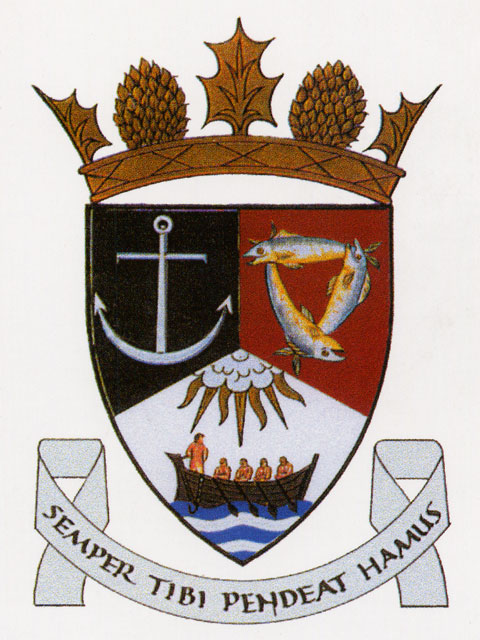Anstruther Armorial Bearings
ARMS
Argent, three piles Sable
MOTTO
Perlissem ni perlissem (I would have perished had I not persisted)
SUPPORTERS
Two falcons with wings expanded Proper, beaked and membered Gules, gelled and jessed Or
STANDARD
Asure, a St Andrew’s Cross Argent in the hoisted and o two tracts Sable and Argent, upon which is depicted the Crest issuant from a coronet Or in the first compartment, two daggers in saltire Argent handled Sable environed of a crest coronet Or in the second compartment, and a sprig of olive slipped and leaved Proper in the third compartment, along with the Sloban ‘Castle Dreel’ in letters Argent upon two transverse bands Bules
PINSEL
Argent, displaying the Crest upon a Wreath of the Liveries Sable and Argent surrounded by a strap Sable buckled and embellished Or inscribed with the Motto ‘Perlissem ni periissem’ in letters Or all within a circlet Or fimbricated Vert bearing the name and style ‘Anstruther of that Ilk’ in letters Sable, the same ensigned of a chapeau Gules furred Ermine, and in the fly on an Escrol Sable surmounting a sprig of olive slipped and leaved Proper in Slogan ‘Castle Dreel’ in letters Argent

The arms were granted on January 25, 1995.
The arms are a modified version of the arms of the Royal Burgh of Kilrenny, Anstruther Easter and Anstruther Wester, granted in 1929. The anchor is for Anstruther Easter, and denotes that it is a seaport. The black and silver colours are those of Anstruther of that Ilk, whose castle stood in the area. The three fish are for Anstruther Wester and refer to the salmon river on the border of Anstruther Easter and Wester. The base shows a fishing scene for Kilrenny.
The motto means ‘May the hook ever hang in your favour’.







